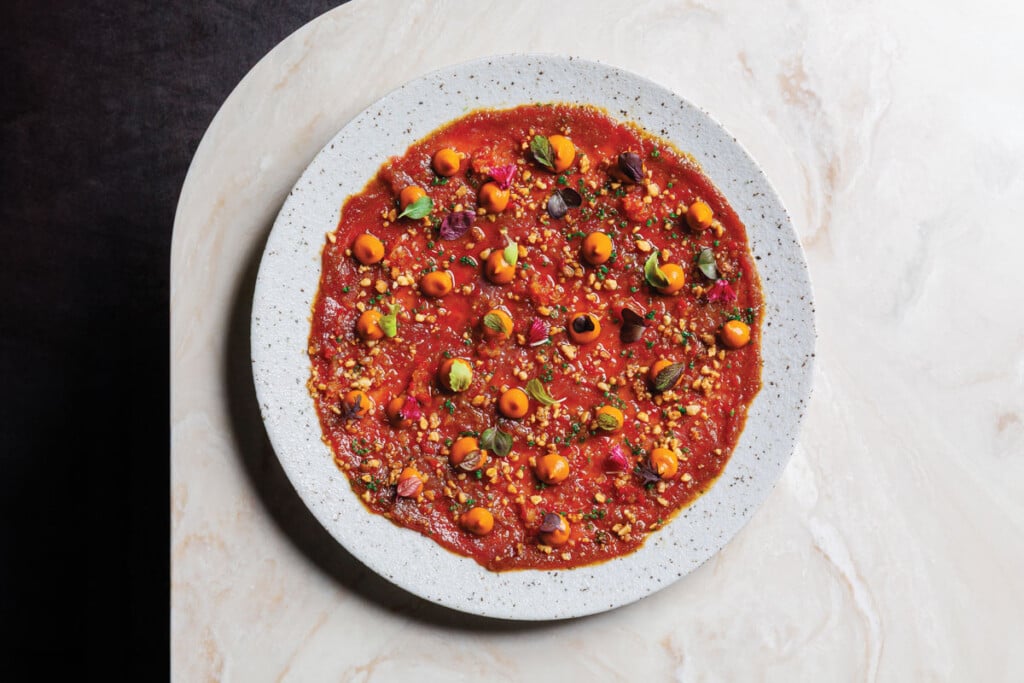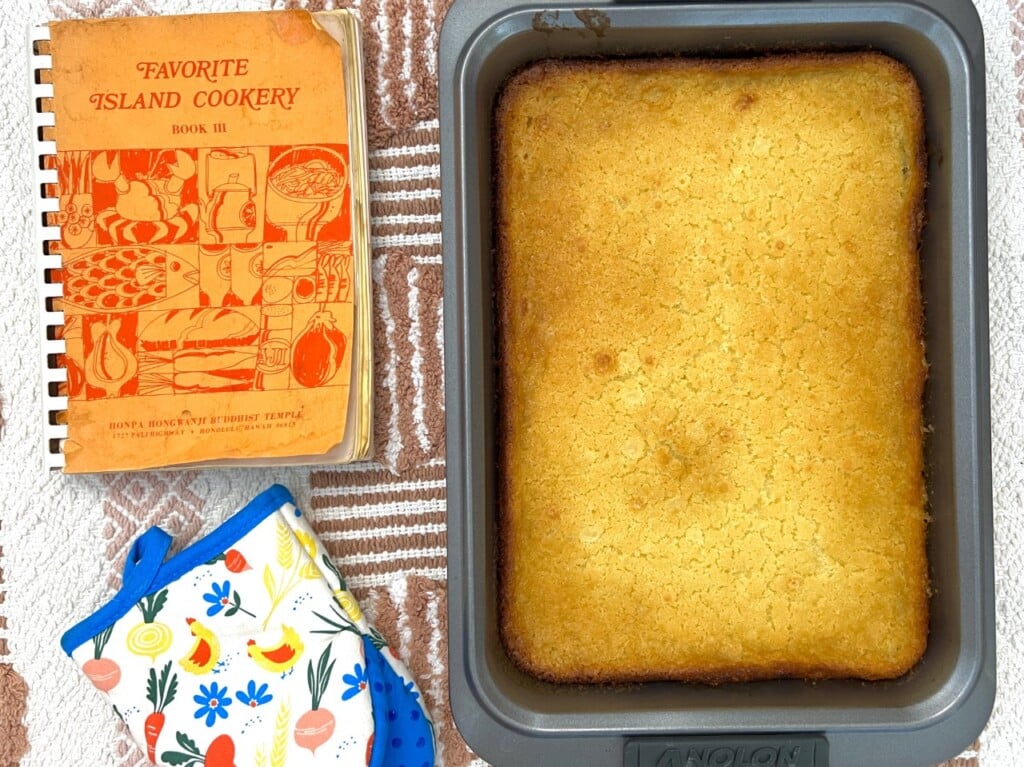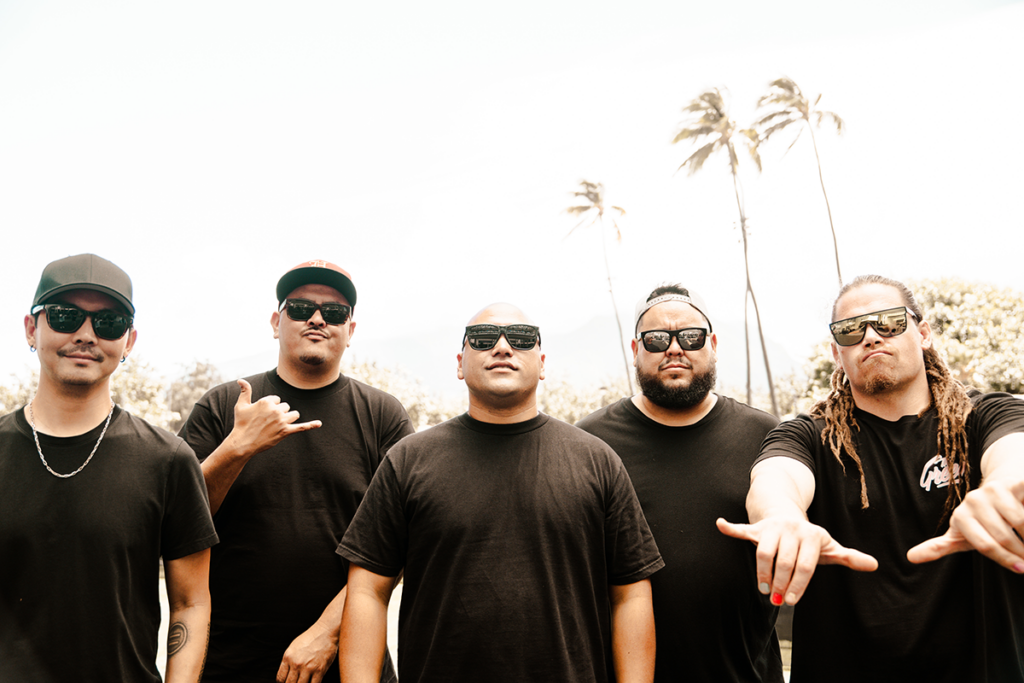Venison Tartare, Haole Koa Capers, Strawberry Guava Pastries: Where and How to Eat Our Invasive Species
Invasive species are bad for Hawai‘i’s ecosystem. The best way to vanquish our enemies? Eat them.

Senia’s venison carpaccio. Photo: Aaron K. Yoshino
At least our invasives taste good. The tart and sweet ruby red strawberry guava along our hiking trails. The Himalayan ginger that gives cocktails the fragrance of a tropical forest after a warm rain. Axis deer, lean yet tender and clean-tasting, whether in a tartare or ragu. Compare that with invasives in other areas of the country, like nutria—large rodents with long teeth that look as if they’re stained with blood. Or lionfish with venomous spines. Or the Burmese python that can grow as long as a shipping container. While the continent deals with making 20-pound rodents tasty, our invasive deer are fancy enough for The French Laundry and Alinea.
In some ways, it’s embarrassing/frustrating/indicative—take your pick—of our food systems that we don’t eat more invasives. On an island chain where around 90% of food is imported—food that seems to get more expensive every day—the invasive plants and animals all around us are abundant. For some, invasive species can even feel like a gift.
Vince Dodge, who makes flour from the pods of kiawe trees, remembers when he learned that Indigenous communities in the Sonoran Desert regarded mesquite (a cousin of Hawai‘i’s introduced kiawe) as a “mother tree of the desert,” and its flour a staple food. He thought, “Could it be true that the most common wild tree on the Wai‘anae Coast, where we have the most diabetes, makes a diabetic-friendly and naturally sweet food?” The answer, he says, “turns out to be 100% true.” Kiawe, rather than being a nuisance, suddenly felt like a valuable resource. “We’re not even taking care of the ‘āina, and the ‘āina is taking care of us.”
According to the Hawai‘i Invasive Species Council, there isn’t an official “invasive” designation, but an invasive species is generally one that’s not native to Hawai‘i and considered harmful to the environment, economy and/or human health. In many ways, what we deem invasive is framed by its usefulness to humans. Take the nonnative honeybee. It can sting, but we are constantly trying to save it partly because it helps to pollinate our crops.
Then consider the little fire ant, which also stings. It’s the target of aggressive eradication efforts. Certainly, the damage inflicted by some nonnative species can be devastating: In the past decade, a fungus that causes rapid ‘ōhi‘a death has killed between 1 million and 2 million ‘ōhi‘a trees, which support many native species and are integral to our watershed. And you only need to look at our dying palms to witness the destruction caused by the fearsome coconut rhinoceros beetle.
But the most invasive species of all? Humans. As Dodge puts it, it’s ironic to “label other creatures as invasive when we’re the ones that created the conditions for them to be invasive.” And so, we learn to coexist. For some “invasivores,” it’s about “eating them to beat them,” but it is also simultaneously, paradoxically, celebrating their abundance—and, sometimes, their deliciousness. Some of these invasive species will likely never be eradicated, but perhaps we can enjoy them while finding equilibrium.
SEE ALSO: Hawai‘i’s Endangered and Threatened Species

Arden Waikīkī’s venison tartare. Photo: Aaron K. Yoshino
Axis Deer
Of all the invasives, Axis deer is my favorite to eat. It’s also one of my favorite meats, period. The more tender cuts make great steaks and are also tasty raw—try it as sashimi!—while the tougher parts are excellent as the backbone of hamburgers and long-simmered pasta sauces. Venison is also one of the most available invasives in restaurants and markets. Preparations change frequently, but you might find it in Fête’s three-meat lasagna, and as proof of its appeal raw, as a carpaccio with a soy truffle glaze and mac nut crumble at Senia. At The Pig & The Lady, it’s a tartare heaped onto a mentaiko grilled cheese toast; at Arden Waikīkī, it’s also a tartare, only there it’s mixed with bonito aioli and pickled shallots.
Venison is accessible thanks to the efforts of Maui Nui Venison, Moloka‘i Livestock Co-op and Moloka‘i Wildlife Management. These businesses offer some of the only wild and hunted game meat that can be sold in the U.S. (“Game” meat like buffalo that’s often sold in stores is usually farmed.) For them to get that meat, USDA inspectors have to accompany the businesses on their overnight hunts, an expense and hassle that other companies won’t undertake.
Maui Nui Venison started with the mission to balance the deer populations on Maui to help protect the island’s ecosystem and agriculture. Axis deer arrived here as a gift to King Kamehameha V in 1867; without natural predators, the original eight deer ballooned into a population of tens of thousands on Moloka‘i, Maui and Lāna‘i. They’re so voracious, they destroy their own habitats. Jessica Rohr of Forage Hawai‘i, a local butchery that carries Maui Nui Venison on O‘ahu, says, “My whole business started because I wanted to get people to eat more venison.” Previously a vegetarian, she says, “No matter where you stand between vegan and carnivore, if you care about the environment, you can appreciate that we have too many deer here, and the population needs to be managed for the ecosystem, for the sustainability of a lot of native species.”
Because the process of making game meat commercially available is arduous, the meat itself is expensive. Unless you hunt. With a license, you can hunt on Moloka‘i, Maui and Lāna‘i (make sure to contact the state Division of Forestry and Wildlife for details) and stock your freezer, as many local hunters do. If you’re not in it for the hunt, find venison at Forage Hawai‘i, Farm Link Hawai‘i, ChefZone, and from Mauka Meats.
SEE ALSO: Local Online Grocer Farm Link Builds Up Hawai‘i’s Food Systems

Fresh ta‘ape from Local I‘a. Photo: Aaron K. Yoshino
Ta‘ape
A few years ago, Mud Hen Water spotlighted ta‘ape with an entire tasting menu built around the blue-stripe snapper. It opened with a crudo paired with strawberry guava and green haole koa seeds (more invasives!), and included pasta stuffed with smoked ta‘ape and finished with ta‘ape fish sauce. The main dish: a ta‘ape “porchetta,” the mild white fish rolled with rosemary and fennel and wrapped in a crispy taro crust.
Ta‘ape on menus is still relatively rare, but since Conservation International Hawai‘i launched its campaign to eat more ta‘ape in 2020, it’s seen the annual harvest of the fish nearly double. That means you’re now more likely to find it at places like Local I‘a, Tamashiro Market, and Brian’s Seafood Market at the Marketplace at City Square. With its delicate white meat, it’s become my favorite fish to deep-fry whole. Plus, it’s cheaper than a lot of fish, at about $6 a pound.
This isn’t the first time people have pushed ta‘ape. In 1987, a biologist with the Division of Aquatic Resources started the Ta‘ape Market Development Project, telling an interviewer: “it’s a good eating fish. People in Hawai‘i like fish so much that we import fish every year. It’s crazy that we don’t use the ta‘ape. … If only people would try it.”
In the 1950s and early 1960s, 2,400 live ta‘ape from the Marquesas were released in Kāne‘ohe Bay to provide additional fishing opportunities and food sources. You can guess what happened—the population exploded.
CI Hawai‘i decided to target ta‘ape because it schools in the hundreds of thousands, and “it’s found in 10 feet of water all the way to 600-plus feet, everywhere from Hawai‘i Island to Papahānaumokuākea,” says Jhana Young, sustainable seafood manager at CI Hawai‘i. “So from a commercial harvesting standpoint, you could really target the ta‘ape schools and feed people from that food security angle, which is what we’re really passionate about. And from an environmental perspective, they’re carnivorous, and eat a lot of our native species.” Add to that the tastiness and affordability of ta‘ape, and it’s indeed crazy that we don’t eat more of it.

Photo: Aaron K. Yoshino
Java Plum
Yuki Uzuhashi of Mānoa Honey & Mead didn’t start adding Java plum to his mead because it was invasive, but because it gave his mead the complexity he was looking for. He found that mead made with only honey tends to become bland, making it “very difficult to make something delicious.” Taking cues from red wine, in which grapes and their skins are used to create all the dimensions that we love in the drink, he experimented with various local fruits.
He discovered a Java plum tree, and when he added its dark purple fruits to his brew, he was immediately pleased with the results. The characteristics that most people shun Java plum for—it’s sour and astringent—lent his mead acidity and tannins, as well as a lovely pink that sometimes verges on magenta. The result: the Java Plum Rosé Sparkling Mead, bright and lightly tart.

53 By The Sea’s kūlolo-kiawe bean toast. Photo: Aaron K. Yoshino
Kiawe
I love kiawe flour and its coconutty and sweet molasses aroma in baked goods, whether it’s chocolate chip cookies, chocolate cake, cornbread or topping a fruit crumble. At Mud Hen Water, a kiawe bean brownie is topped with black sesame gelato, and at 53 By The Sea, kūlolo with kiawe beans is paired with liliko‘i, brioche and coconut ice cream. Vince Dodge’s Wai‘anae Gold kiawe flour is available on Farm Link Hawai‘i, as are ‘āina bars, the company’s energy-pick-me-ups made with kiawe bean flour, peanuts and honey.

The Local General Store’s liliko‘i, orange and strawberry guava mochi Danish and brown butter mochi with strawberry guava jam Danish. Photo: Aaron K. Yoshino
Strawberry Guava
Around town, you’ll see strawberry guava as a flavor, but most often, it’s a combination of strawberry and guava, not the actual prolific fruit that peppers our hiking trails during certain seasons. Strawberry guava, bright red when ripe and about the size of a large marble, is also different from the bigger guavas more commercially available.
The Local General Store highlights the fruit when in season in its pastries; past sweets have included a brown butter mochi with strawberry guava jam Danish, and a strawberry guava and cream cheese braid. And when available, the bakery and butcher shop makes and bottles a sweet and tart strawberry guava barbecue sauce. Zingipop Sodaworks also uses strawberry guava in its guava lemon soda, supplementing it with regular guava as supplies fluctuate.
Himalayan, or Kāhili, Ginger
I think of Mōhala Expressions’ butterfly ginger blossom syrup as a local, tropical version of an orange blossom syrup. It’s powerfully floral and fragrant with a slightly spicy, gingery edge, giving sweets and drinks a sultry touch. While the Himalayan ginger (Hedychium gardnerianum) was deemed one of the world’s 100 worst invasive species, a few other Hedychium species are also considered invasive in Hawai‘i. With similar flowers, sometimes they’re generally termed butterfly ginger, and can be used interchangeably.
Haole Koa
Haole koa capers, fries, salsa and even tempeh can be made with different parts of the haole koa tree. Sunny Savage, a wild foods advocate on Maui, brines the haole koa capers’ unopened flower buds (much like the more common caper) and sells them online. “Each 4-ounce jar prevents an average of 10,000 seeds from ever dropping on the ground,” reads the product description.
Haole koa’s green seeds very occasionally make an appearance on Mud Hen Water’s menu, where they’re charred and blended with chiles, citrus, tomatoes and onions, for a take on Mexican salsa de guaje. The haole koa lends a garlicky flavor to the condiment, which recently accompanied grilled pa‘i‘ai and rib-eye.
Wild Pig
Unless you’re a hunter yourself, or have an uncle or auntie who hunts and supplies you with smoked meat, it’s hard to get wild pork. On O‘ahu, one of the few suppliers is Forage Hawai‘i, which offers ground pork from wild boars that graze on mac nuts and are trapped on a Hawai‘i Island farm. If you’re aiming to be self-sufficient, Slow Food O‘ahu occasionally has classes (pending when the feral pigs are caught) on how to butcher and prepare wild hogs.
Coconut Rhinoceros Beetle

Photo: Getty Images
OK, when we said our invasives are delicious, we weren’t thinking exactly of the coconut rhinoceros beetle, a ferocious-looking 2-inch-long horned insect. It’s decimating Hawai‘i’s coconut trees and threatening native palms, taro, bananas and hala. But Nat Bletter, a forager (and founder of Madre Chocolate), wants to rename the CRB larvae “land shrimp” in an effort to get people to eat them. Fair enough: Why are many of us OK with eating aquatic creatures that look like bugs, but not with actual bugs?
“They taste a lot like shrimp,” Bletter insists, though he adds that he hasn’t had shrimp in a few years. His post on Instagram showing him eating the sautéed grubs isn’t quite convincing—“not bad,” he says, before adding hot sauce to the next bite. You’ll have to forage for the grubs; Bletter recommends going where there are coconut trees and stumps to find them.
Foraging Resources and Tours
Natty By Nature, nattybynature.net, @nattybynature808
Follow the Wai, followthewai.com, @followsthewai
Mōhala Expressions, mohalaexpressions.com, @mohalaexpressions
Sunny Savage, sunnysavage.com, @sunnysavageofficial











